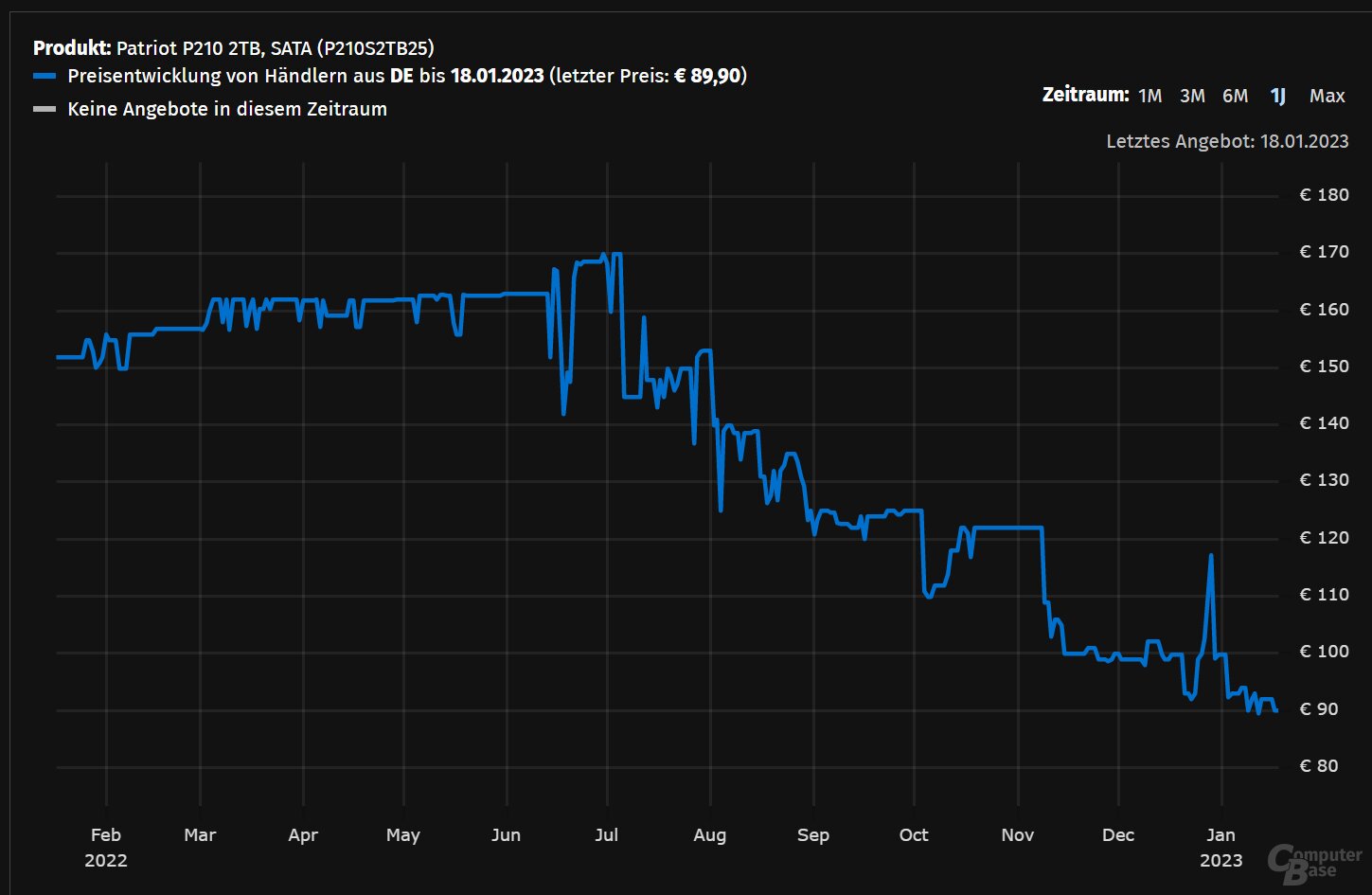SSDs are cheaper than ever. While some SATA models had already cracked the 5 cents per gigabyte mark, the first NVMe SSDs are now joining them. This means that 1 TB SSDs can be bought for less than 50 euros. But when it comes to the price per gigabyte, the slower HDDs remain unbeaten.
Oversupply of memory chips
The global drop in demand for electronics combined with high inventories has been driving prices for NAND flash memory down for months. Products based on it, such as SSDs and USB sticks, are becoming cheaper and cheaper.
After SATA now also NVMe for less than 5 cents/GB
By the end of 2022, the first SSDs would have fallen below the mark of 5 cents per gigabyte or 50 euros per terabyte. These were entry-level models with a SATA interface in the increasingly rare 2.5-inch format. There are now models like the Patriot P210 (test) even from 48 euros per terabyte. The 2 TB variant does not cost 90 euros more.
 SSDs for less than 50 euros per terabyte
SSDs for less than 50 euros per terabyte Price development for Patriot P210 with SATA
Price development for Patriot P210 with SATAIn January 2023, the first SSDs with a PCIe interface and NVMe protocol will break this mark, albeit only just. Inexpensive M.2 models such as the Kingston NV2 (test), the Kioxia Exceria G2 or the PNY CS1030 are currently available from 49.90 euros in the version with 1 TB of storage volume.
 Price history for Kioxia Exceria G2 with NVMe
Price history for Kioxia Exceria G2 with NVMe NVMe SSDs also crack the mark of 50 euros per TB
NVMe SSDs also crack the mark of 50 euros per TB Price history of Kingston NV2 with NVMe
Price history of Kingston NV2 with NVMeCheap often means rather cheap
But caution is advised: the cheapest models are of course not the best and by no means the fastest. The current blockbusters Patriot P210 and Kingston NV2 showed their weaknesses in the test. Above all, one thing is unsightly: the customer buys a pig in a poke, because both manufacturers reserve the right to make changes to the components used at any time, which are therefore not mentioned in the data sheet and are therefore not specified.
In the case of the Kingston NV2, for example, this can mean that the slower and less durable QLC-NAND is used instead of TLC memory. According to a survey by ComputerBase, the variants with QLC are much less common in retail. Nevertheless, extremely low write rates after the SLC cache must then be expected.
Rapid price decline for SSDs over the years
The lowest SSD prices were about eight years ago at 33 cents per gigabyte or the equivalent of 330 euros per terabyte. This illustrates the rapid fall in price of the technology, which was relatively new at the time but is now widespread.
in cents Price fall
vs. Previous year December 2011 124 – December 2012 77 -38 percent December 2013 45 -42 percent November 2014 33 -27 percent h2>
Nevertheless, the purely electronic SSDs remain far more expensive than the mechanical magnetic storage hard drives (HDDs). Despite prices of less than 2 cents per gigabyte or 20 euros per terabyte, these no longer play a role in the consumer segment because, compared to SSDs, they slow down the system noticeably and also work loudly and require more space. These factors play a subordinate role in NAS systems or storage servers (cloud). Here, HDDs are far from indispensable due to the significantly lower costs per storage volume.
 HDDs remain significantly cheaper per GB than SSDs
HDDs remain significantly cheaper per GB than SSDs